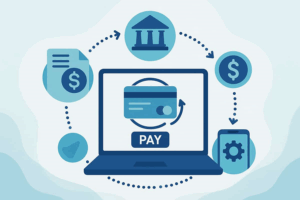
It’s not just about stringing words together, creating awesome content for your blog is about creating engaging, value driven posts that your audience will love. In today’s digital world, it’s not enough to have a good product, you need to have a strategy, creativity, and a deep understanding of what your readers need. This is a complete guide to help you create great blog content every time.
Know Your Audience Inside Out
Before you start typing away, you need to know who your audience is. It should be about their interests, it should solve their problems and it should speak their language. Demographics like age, profession, and location, and psychographics such as their values, goals, and challenges are all things to consider in order to do this. Having a well defined audience persona helps you tailor your content for maximum relevance.
If you know your readers, think about their journey. Are they beginners who want to learn the basics or experts who want to learn the advanced stuff? This helps you not overwhelm or underwhelm them with their level of knowledge. Understanding their unique needs will build trust and position you as a trusted authority in your niche.
Choose Topics That Resonate
The first step of the best blog content is the right topics. Look for subjects that grab attention or answers burning questions or giving voice to trending subjects in your niche. To find out what’s on your audience’s mind right now, use tools like Google Trends, forums, or social media. That way, your posts will be timely and relevant.
Trending topics are fun, but don’t forget about evergreen content. These are pieces that are relevant over time, such as guides, tutorials, or how to articles. Keep your blog dynamic and still valuable by finding a balance between timely and timeless topics.
Craft Captivating Headlines
Your first chance to get attention is with a compelling headline. Your headline alone will decide in seconds whether readers click or not. Strong action verbs, numbers, or thought provoking questions draw a reader in to entice curiosity. For instance, rather, than writing something like “How to Increase Traffic” you could have a headline like “10 Proven Ways to Double Your Blog Traffic.”
The value of your post should also be clearly conveyed in your headline. They want to know what they’ll get by clicking. Try to include keywords naturally to increase SEO, but keep your headline reader friendly and enticing.
Write Engaging Introductions
Your introduction is what sets the tone for your entire post. First off, before you can even start, you want to get a hook that grabs the readers’ attention from the get-go. This could be a surprising statistic, an anecdote that we can all relate to, a bold statement that upsets conventional wisdom…

The idea is to get your audience hooked enough to continue reading.
Once you’ve written your hook, outline what your post will be about. This helps readers know what to expect and that they’re in the right place. Make your introductions short but engaging, so that you can set the tone for the value packed content to come.
Focus on Readable and Scannable Content
Many online readers routinely skim instead of reading every word. Readability of your posts means that they can quickly find the information they need. To make the text less intimidating, break it up in paragraphs with short, bullet points and subheadings.
Formatting isn’t just about making things look pretty, it makes things easier to understand. Bold or italics key points, and white space to help readers along. Finally, make sure you keep your sentences clear and concise. It keeps your content inclusive and engaging if you write at an accessible reading level.
Incorporate Visuals Strategically
Visual elements can make a good blog post great. Images, infographics and videos not only improve our understanding, it improves the look of your posts. Instead of seeing visuals only for the sake of seeing visuals, choose visuals that complement your content and offer value.
If you’re using visuals, remember to optimize them for faster loading times. Embedded videos, and compressed images make user experience better without compromising on quality. Also don’t forget to add descriptive alt text for accessibility and better search engine optimization.
Leverage the Power of Storytelling
Blogging isn’t just about novels; storytelling is a powerful tool. Your content becomes relatable and memorable when you tell personal stories or case studies. Your stories are more likely to be read when readers see themselves in them.
Don’t be afraid to be vulnerable or share failures with successes. Anybody who wants to build a loyal readership should keep authenticity as his corner stone. A good story has an emotional connection to your audience and reinforces the core message of your post.
Use AI Tools to Supercharge Your Writing
AI writing tools have completely changed the way bloggers create content. These tools can be used to drop inspiration, refine drafts, and even point out how your writing can sound a bit better. For instance, an AI writer can write outlines, correct grammar, and make text more readable, so you don’t need to spend time and effort on it.
But AI is not a replacement, it’s a supplement. It makes the process easier, but your voice and your insights are irreplaceable. AI can create drafts for you in minutes, and give you the time back to polish the content with your knowledge to make it work. To make sure those drafts don’t sound robotic, using an AI Humanizer helps refine the tone so your writing feels authentic and aligned with your personal style.
Master the Art of SEO
Driving organic traffic to your blog is important and search engine optimization (SEO) is a must. Begin with the research of keywords related to your topic and how to strategically insert your keywords into your headings and subheadings, as well as body text.

If you don’t know what high value keywords are, tools like SEMrush or Ahrefs can help you find them.
It’s more than just keywords, you should also pay attention to SEO factors such as meta desriptions, alt text for images, and internal linking. A well optimized post is more likely to rank higher in search results and your content gets to a wider audience.
Provide Actionable Takeaways
Your blog readers want solutions. Each post should provide clear actionable advice she asks them to implement immediately. Actionable content — whether it’s a step by step tutorial or a list of tips — builds trust and shows that you know what you’re talking about.
Don’t be vague or too general. Specificity is key. Let’s take a look at an example: Instead of saying “Improve your social media presence” explain how to “Post engaging stories on Instagram daily at optimal times to ensure max reach.”















